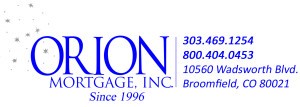Reverse Mortgage Planning
I met a man whom I’ll call George at a networking event last summer. In 2013, George and his wife Kathy bought a home for $428,000 with 10% down and a $385,389 loan. In August 2016, George asked me if they could get a reverse mortgage. George is 64 and Kathy is 62.
Their Situation Didn’t Qualify for a Reverse Mortgage
I reviewed their current situation and found that the current value of their home is about $570,000 and they owed $367,396. That balance is too high to transfer to a reverse mortgage. They don’t have the cash to pay the balance down now, but if they wait the value should continue to increase.
Unfortunately, the maximum lendable value for an FHA reverse mortgage in the Denver metro area in 2016 is $625,500. This means any increase in value above $625,500 will not result in more money to pay off the existing loan. When I entered a value of $625,500 into the reverse mortgage software along with George and Kathy’s birthdates, I found that it could pay off a $313,760 loan balance. My conclusion here was that appreciation alone will not make it possible for George and Kathy to get a reverse mortgage on this property. They really need to get the loan balance down to about $313,000.

Finding a Solution
Their existing loan had a rate of 4% and private mortgage insurance. Refinancing to a 20-year loan at 3.5% with no closing costs to the borrower would mean that the payment would remain about the same as they are paying now while the balance would reach $313,785 in just 4 years. Without this refinance, it would take years longer before they could qualify for a reverse mortgage unless they made higher payments.
George and Kathy’s story is one example of how we look beyond what the borrower asks in order to find a solution. Instead of just declining a loan, we look for ways to turn a “no” into a “not now,” giving the borrower a plan to get the loan they want.
